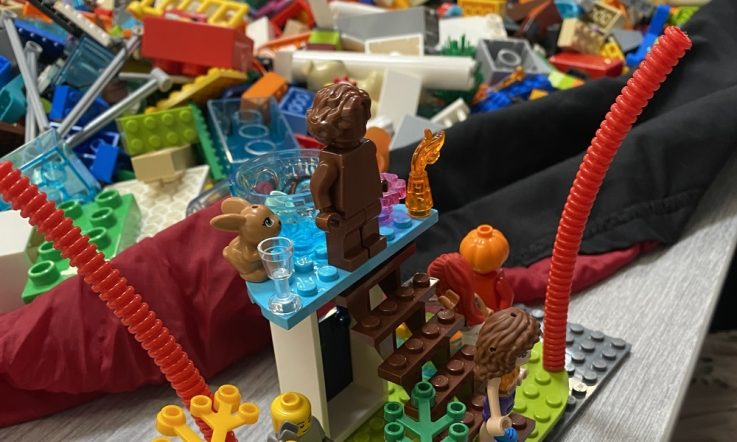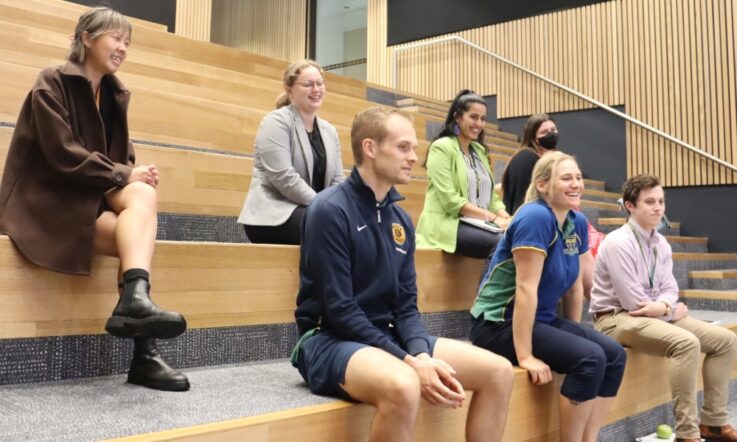Recruiting career changers into teaching has become part of a strategy by governments to address teacher shortages in hard-to-staff schools.
In their paper, Career change teachers in hard-to-staff schools: should I stay or leave?, researchers present a case study of 2 career change teachers and trace their career journey into Initial Teacher Education (ITE) and the teaching profession in 2 separate hard-to-staff schools. As part of this research, they interviewed the teachers during the first 2 years of their career change journey.
This research aims to provide a more nuanced understanding of how career change teachers (people who enter teaching from other professions) navigate challenges in these schools in their early years of switching to the profession.
Dr Babak Dadvand is a Senior Lecturer (Pedagogy, Professional Practice and Teacher Education) in the School of Education at La Trobe University and a lead researcher on this project.
He says that the number of career changers in teaching has been steadily growing, yet research remains in short supply as to how these teachers go about navigating the changing role expectations and shifting identities that come with this career move.
This research was started at the beginning of the pandemic, when a lot of people experienced changes to their employment and started to think about changing careers. Some of these career changers decided to enrol in employment-based teacher education programs.
‘These programs really catered for people who mostly wanted to change careers because it offered them immediate employment with some sort of salary, an entry-level salary into teaching,’ Dadvand tells Teacher.
‘What we were primarily interested in was to understand what is it that attracts these individuals to change careers to become teachers? What motivates them? But also, what are some of their stories and some of their career change challenges?[And] what helps them to stay in the profession? So those were the broad questions that guided our research with these participants.’
The 2 case studies
The paper – published in The Australian Educational Researcher – explores 2 case studies. Dadvand says that these educators were part of a larger study, but the researchers chose to focus on them for this work because they were the only 2 teachers who were interrogating their decision to stay in the profession.
‘We asked all these teachers at the end of the interview, “do you see yourself staying in teaching or not?” and these 2…didn’t give us a definite “no” but they were sort of wondering whether they should stay or not. Then we thought, we should dig a bit deeper into what was it that motivated them initially to become teachers? What happened along the way, halfway through their teacher education program? And what types of supports could have helped keep them in the profession?’
The participants were enrolled in a 2-year employment-based ITE programme in Victoria, which combined intensive study with teaching at 0.8 FTE (4 days a week) on an entry-level salary.
The first case study, Maria, had extensive experience in youth care before enrolling in her ITE program. Having graduated as an Art Therapist about 20 years ago, Maria had worked with homeless youth and children with trauma experience. The other case study, Marcus, had a bachelor’s degree in science and had worked in a hospital setting in medical record-keeping for a few years before his career change decision.
The challenges they faced
Dadvand says that both people were initially driven to become teachers by their strong desire to do something good and contribute to the common good. He says that when they first joined the program, they were very enthusiastic and excited about the journey they were taking. But they soon found that they had to reposition themselves from someone with a lot of experience in their fields, to a novice teacher, which was a big challenge to overcome.
‘A lot of them have a lot of experience which I think they thought could be very easily transferrable to what they do in schools, which didn’t really happen that way,’ he says. We talk a lot about “praxis shock” which is when your expectation doesn’t really live up to the reality of teaching in schools and I think some of them, both of them, but especially one of the participants in this study, had experienced the praxis shock.’
The 2 case study participants also found it challenging to navigate the complex balance of teaching almost full-time, 4 days a week in school, while doing their university degree to become an accredited teacher.
‘So that was a big challenge in terms of meeting the requirements that their initial teacher education had and fulfilling the role of a teacher 4 days a week in the school. I think these were probably the 2 most outstanding challenges that were common amongst nearly all of the participants but these 2 in particular as well.’
A cohesive strategy for staffing hard-to-staff schools
In their journal paper, the researchers write: ‘…in the absence of adequate teacher support, initiatives that provide shortcuts to the profession as a way of addressing systemic teacher shortages in these school settings are unlikely to solve the problem they address.’ Dadvand says a more cohesive strategy for staffing hard-to-staff schools adopts a long-term agenda.
‘At the moment what we see is different initiatives and different programs, one-off incentives, relocation grants – so a different patchwork of solutions that are often offered but don’t really address the underlying causes of teacher shortages. So on the one hand we really need to look at teacher recruitment, how can we recruit the best and the brightest or the most capable candidates into the teaching profession? How can we make teaching a more attractive career option for the graduates and career changers as well? So that’s one aspect of it – looking at the entry into the teaching and who gets into the initial teacher education program?
Dadvand says the second element is really looking at what happens in initial teacher education programs and questioning whether they are adequately preparing graduates for their time in the classroom. The third element is about working conditions.
‘But I think, most importantly, we really need to look at the working conditions in the schools because I think this is one of the main reasons why teachers, some of our most passionate and capable teachers, don’t stay. It’s because the working conditions are far from ideal. If we look at the working conditions and remuneration of teachers compared to similar professions, it’s far from adequate. I think that’s one of the main issues that need to be addressed,’ he adds.
Dadvand says that over the last 10-20 years, teaching has become increasingly bureaucratised.
‘There are very strict systems of reporting and accountability, which is often tied to student performance over high stakes testing like NAPLAN, which is really decreasing the professional autonomy of teachers and I think that’s another main reason when we talk to some of our most experienced and most passionate teachers – lament about loss of professional autonomy on the work they are doing. So that has been the decline for quite some time,’ he says.
‘It’s a complex issue but I think it needs to be addressed at different levels but underlying any response would be this long-term planning and vision for keeping teachers that are most passionate and most capable for the schools that need them most. What are the conditions that are most conducive for attracting them, for preparing them, but equally important, how to keep them when they’re in the profession?’
References
Dadvand, B., van Driel, J., Speldewinde, C., & Dawborn-Gundlach, M. (2023). Career change teachers in hard-to-staff schools: should I stay or leave?. The Australian Educational Researcher, 1-16.
As a career change teacher, did you experience praxis shock? Did your expectations of teaching as a profession live up to the reality of your experience? What supports did you find useful to help you overcome this?
As an educator, think about your own experience in initial teacher education. Do you feel that it adequately prepared you for the profession? Did you feel supported throughout the process? How do you think your experience could have been improved to ensure you were ready for the reality of teaching in the classroom?



